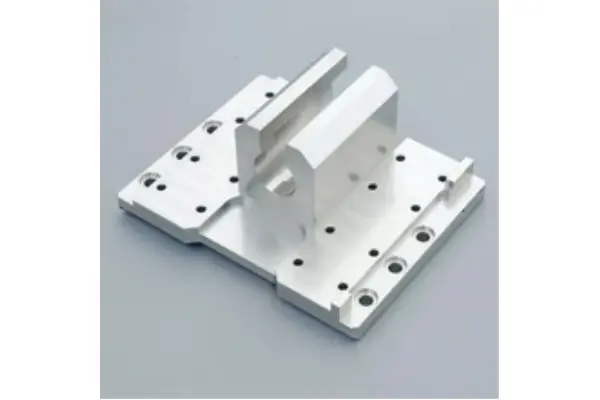The automotive industry is undergoing a transformative shift towards lightweight, fuel-efficient, and eco-friendly vehicles. At the forefront of this revolution is the increasing use of aluminum automotive parts. Known for their exceptional strength-to-weight ratio, corrosion resistance, and recyclability, aluminum components are becoming a staple in modern vehicle design.
In this article, we’ll explore the benefits of aluminum automotive parts, their applications, and why they are a game-changer for the automotive industry. Whether you’re a manufacturer, supplier, or automotive enthusiast, this guide will provide valuable insights into this critical material.
Why Aluminum is the Material of Choice for Automotive Parts
Aluminum has emerged as a preferred material for automotive components due to its unique properties:
Lightweight: Aluminum is approximately one-third the weight of steel, making it ideal for reducing vehicle weight and improving fuel efficiency.
Durability: Despite its lightweight nature, aluminum offers excellent strength and durability, ensuring long-lasting performance.
Corrosion Resistance: Aluminum naturally forms a protective oxide layer, making it highly resistant to rust and corrosion.
Thermal Conductivity: Aluminum’s ability to dissipate heat makes it perfect for components like radiators and engine blocks.
Sustainability: Aluminum is 100% recyclable, contributing to a circular economy and reducing the environmental impact of vehicle production.
Key Applications of Aluminum Automotive Parts
Aluminum is used in a wide range of automotive components, from structural parts to engine systems. Here are some of the most common applications:
1. Body Panels and Frames
Aluminum is increasingly used in vehicle body panels, such as hoods, doors, and trunk lids, to reduce weight without compromising strength. It’s also used in frame structures to enhance crashworthiness and fuel efficiency.
2. Engine Components
Aluminum’s thermal conductivity and lightweight properties make it ideal for engine parts like cylinder heads, pistons, and engine blocks. These components benefit from improved heat dissipation and reduced overall vehicle weight.
3. Wheels and Suspension Systems
Aluminum wheels are popular for their lightweight design, which improves handling and fuel efficiency. Suspension components, such as control arms and knuckles, also benefit from aluminum’s strength and durability.
4. Transmission Systems
Aluminum is used in transmission housings and other components to reduce weight and improve performance.
5. Heat Exchangers
Radiators, condensers, and other heat exchangers are often made from aluminum due to its excellent thermal conductivity and corrosion resistance.
6. Electric Vehicle (EV) Components
As the EV market grows, aluminum is playing a crucial role in battery enclosures, motor housings, and other components that require lightweight and durable materials.
Benefits of Aluminum Automotive Parts for Manufacturers and Consumers
For Manufacturers:
Improved Fuel Efficiency: Lightweight aluminum parts help automakers meet stringent fuel economy and emissions standards.
Enhanced Performance: Aluminum components contribute to better acceleration, handling, and braking.
Cost Savings: Although aluminum can be more expensive upfront, its durability and recyclability often result in long-term cost savings.
Sustainability: Using aluminum supports eco-friendly manufacturing practices and reduces the carbon footprint of vehicles.
For Consumers:
Lower Fuel Costs: Vehicles with aluminum parts are more fuel-efficient, saving drivers money at the pump.
Increased Durability: Aluminum’s corrosion resistance ensures that vehicles last longer, even in harsh conditions.
Better Driving Experience: Lightweight components improve handling, acceleration, and overall performance.
Challenges and Innovations in Aluminum Automotive Parts
While aluminum offers numerous benefits, there are some challenges to consider:
Cost: Aluminum is generally more expensive than traditional materials like steel. However, advancements in manufacturing processes are helping to reduce costs.
Joining Techniques: Aluminum requires specialized welding and joining techniques, which can increase production complexity.
Recycling Infrastructure: While aluminum is recyclable, the infrastructure for collecting and processing automotive aluminum is still evolving.
To address these challenges, manufacturers are investing in innovative solutions, such as:
Advanced Alloys: Developing new aluminum alloys with improved strength and formability.
Efficient Manufacturing Processes: Adopting techniques like hydroforming and extrusion to reduce waste and costs.
Collaborative Recycling Programs: Partnering with recyclers to create closed-loop systems for aluminum automotive parts.
The Future of Aluminum in the Automotive Industry
The demand for aluminum automotive parts is expected to grow significantly in the coming years, driven by trends such as:
Electric Vehicles (EVs): Aluminum’s lightweight properties are critical for extending the range of EVs.
Autonomous Vehicles: The need for durable and lightweight materials will increase as autonomous vehicles become more prevalent.
Sustainability Goals: Automakers are under pressure to reduce emissions and adopt sustainable materials, making aluminum an attractive choice.
By 2030, it’s estimated that aluminum will account for up to 50% of the average vehicle’s weight, up from around 10% in 2020. This shift underscores the material’s importance in shaping the future of mobility.
About Empcasting.com
At Empcasting.com, we are dedicated to providing the latest insights and solutions for the automotive industry. Whether you’re looking for information on aluminum automotive parts or need guidance on material selection, we’re here to help. Explore our resources and connect with industry leaders to stay ahead of the curve.
Conclusion
Aluminum automotive parts are revolutionizing the way vehicles are designed, manufactured, and driven. From improving fuel efficiency and performance to supporting sustainability goals, aluminum is a material that delivers on all fronts. As the automotive industry continues to evolve, the role of aluminum will only become more significant.
For more information on aluminum automotive parts and their applications, visit Empcasting.com today. Let’s drive innovation together!




